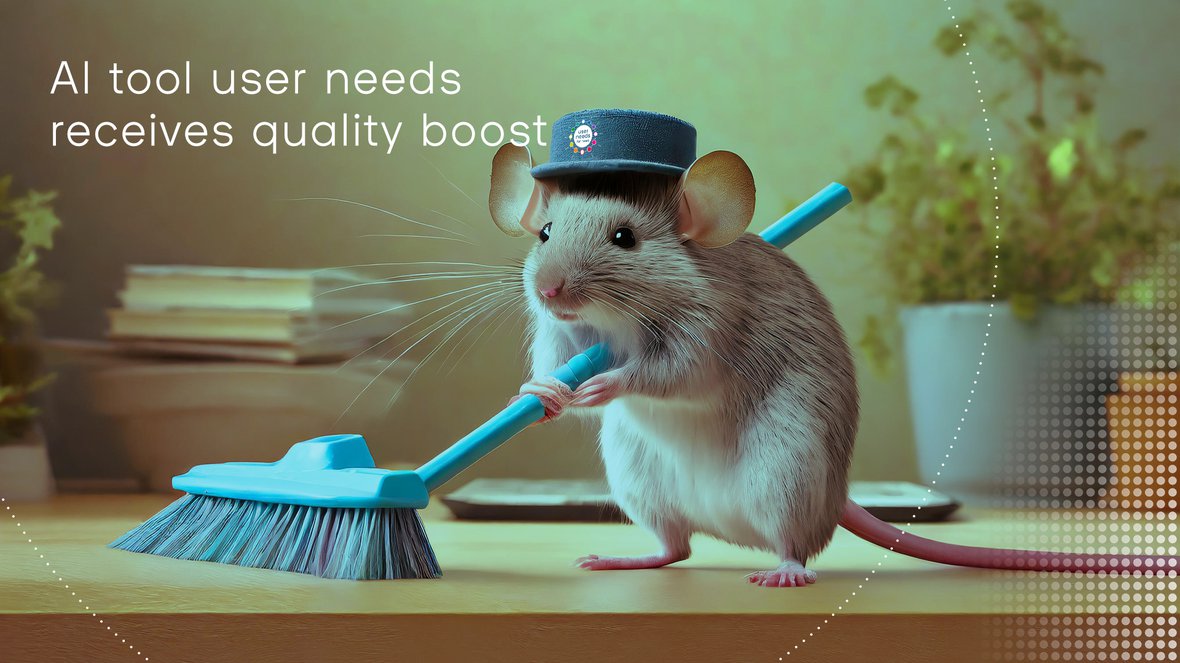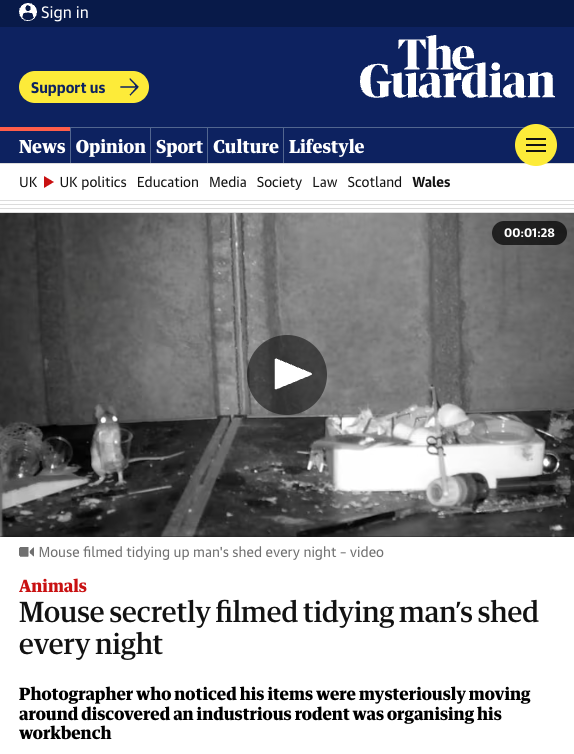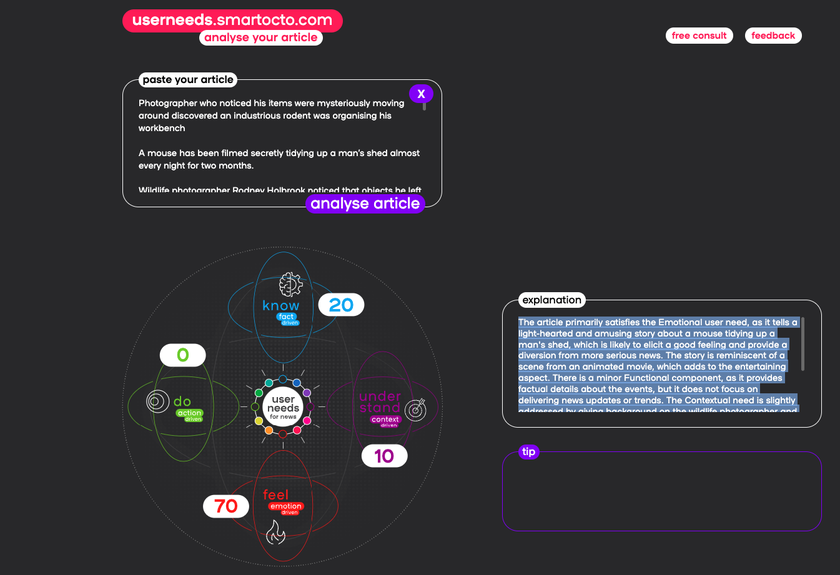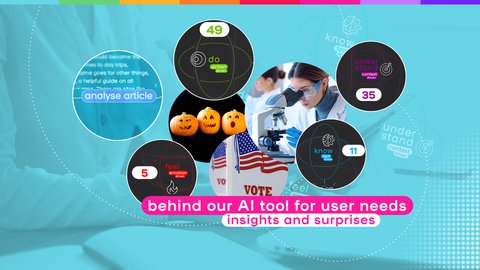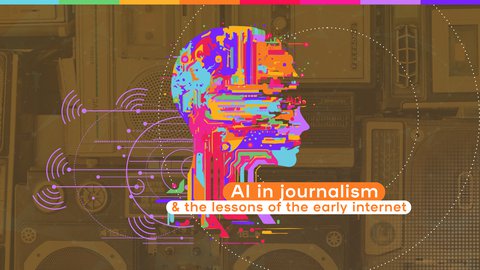After numerous experiments smartocto has been able to implement a series of improvements to the AI tool that helps identify user needs. It’s now better than ever and it’s still free*.
- Improvement in recognising and interpreting emotions in articles. We'll give you an example of a mouse tidying a man's shed.
- Ability to recognise specific user needs, not just the four drivers (fact, context, emotion, action)
The tool can be accessed at userneeds.smartocto.com and remains free to use, *though from today onwards, users will be asked to provide their name and email address in exchange for this service. The reason user needs at smartocto has developed the way it has, into the force that it is, is because it was client feedback and collaboration that drove it. By looping users into the conversation, the user needs team hopes they’ll become part of this process too.
"Our focus is on the development of smartocto.ai, the switch that can be made in our features thanks to the input from large language models," says smartocto’s CEO Erik van Heeswijk. "One of our clients, after a testing period, has decided to go forward with this. smartocto.ai will assist them in devising alternative headlines and content classification. In this latter aspect, we can make good use of the knowledge gained from userneeds.smartocto.com."
The improvement of the tool is best explained with an example. We input the following article into the user needs recogniser:
